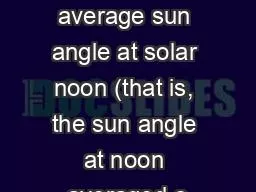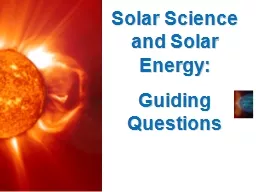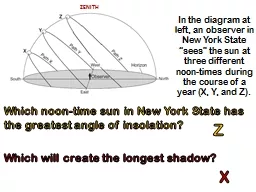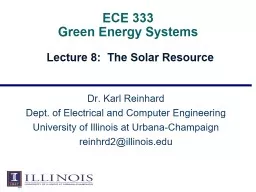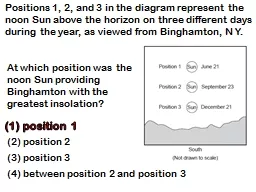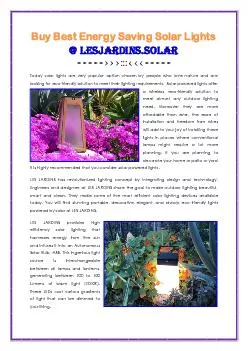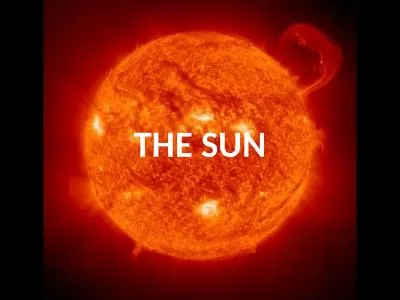PPT-(1) How does the annual average sun angle at solar noon (that is, the sun angle at noon
Author : lindsaybiker | Published Date : 2020-06-23
As latitude increases average sun angle at solar noon decreases As latitude increases average sun angle at solar noon increases Averaged over a full year sun
Presentation Embed Code
Download Presentation
Download Presentation The PPT/PDF document "(1) How does the annual average sun angl..." is the property of its rightful owner. Permission is granted to download and print the materials on this website for personal, non-commercial use only, and to display it on your personal computer provided you do not modify the materials and that you retain all copyright notices contained in the materials. By downloading content from our website, you accept the terms of this agreement.
(1) How does the annual average sun angle at solar noon (that is, the sun angle at noon: Transcript
Download Rules Of Document
"(1) How does the annual average sun angle at solar noon (that is, the sun angle at noon"The content belongs to its owner. You may download and print it for personal use, without modification, and keep all copyright notices. By downloading, you agree to these terms.
Related Documents

